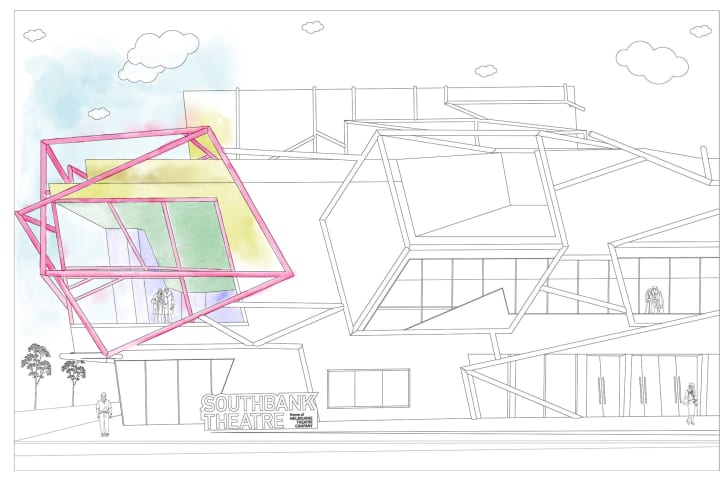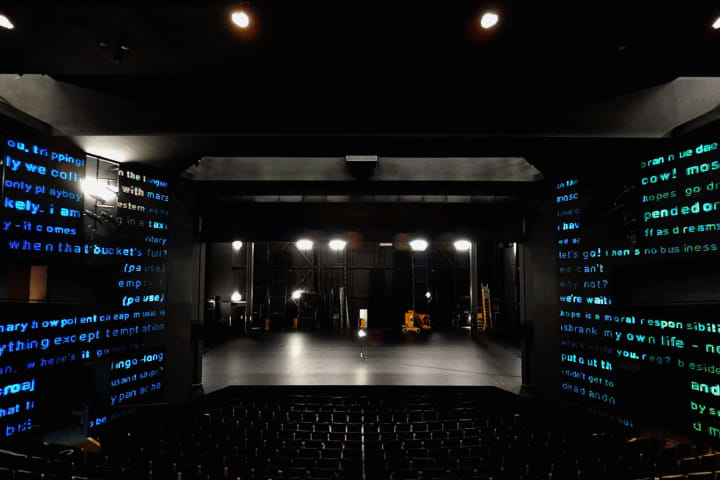After months of design discussions and decisions, and weeks of set and costume manufacture, everything moves to the theatre in a period known as the bump in. Over the course of six days (typically, more technically complex shows may require additional time), all the elements of a production come together at the theatre.
Bump In
Pre-rig
While the set is being packed into trucks at MTC HQ, a masking and lighting pre-rig will happen at Southbank Theatre. Masking needs to be rigged and flown out, and some work needs to be done in the lighting rig before the set is installed on stage and restricts access. The pre-rig is usually allocated five hours or so, and will be overseen by the lighting supervisor, staging supervisor and production services manager.
Day 1 | Install set elements and lighting
The scenery dock (pictured top) becomes a busy thoroughfare as the set arrives, piece by piece, on trolleys. The staging supervisor will interpret the staging plan, and supervise their crew to achieve the staging plot. The lighting supervisor interprets the lighting plan, and supervises their crew with what is required to realise the lighting designer’s vision. The fly supervisor will interpret the lighting and stage plan by working with the lighting, sound and staging supervisors, fly the Power Fly System bars, and program the Nomad console (computers that operate the Power Fly System) to create sequences of movements of bars, or lock out fly bars that may create a hazard if moved. The sound supervisor interprets the composer/sound designer’s requirements, and supervises their crew with the location of speakers and audio system set-up.
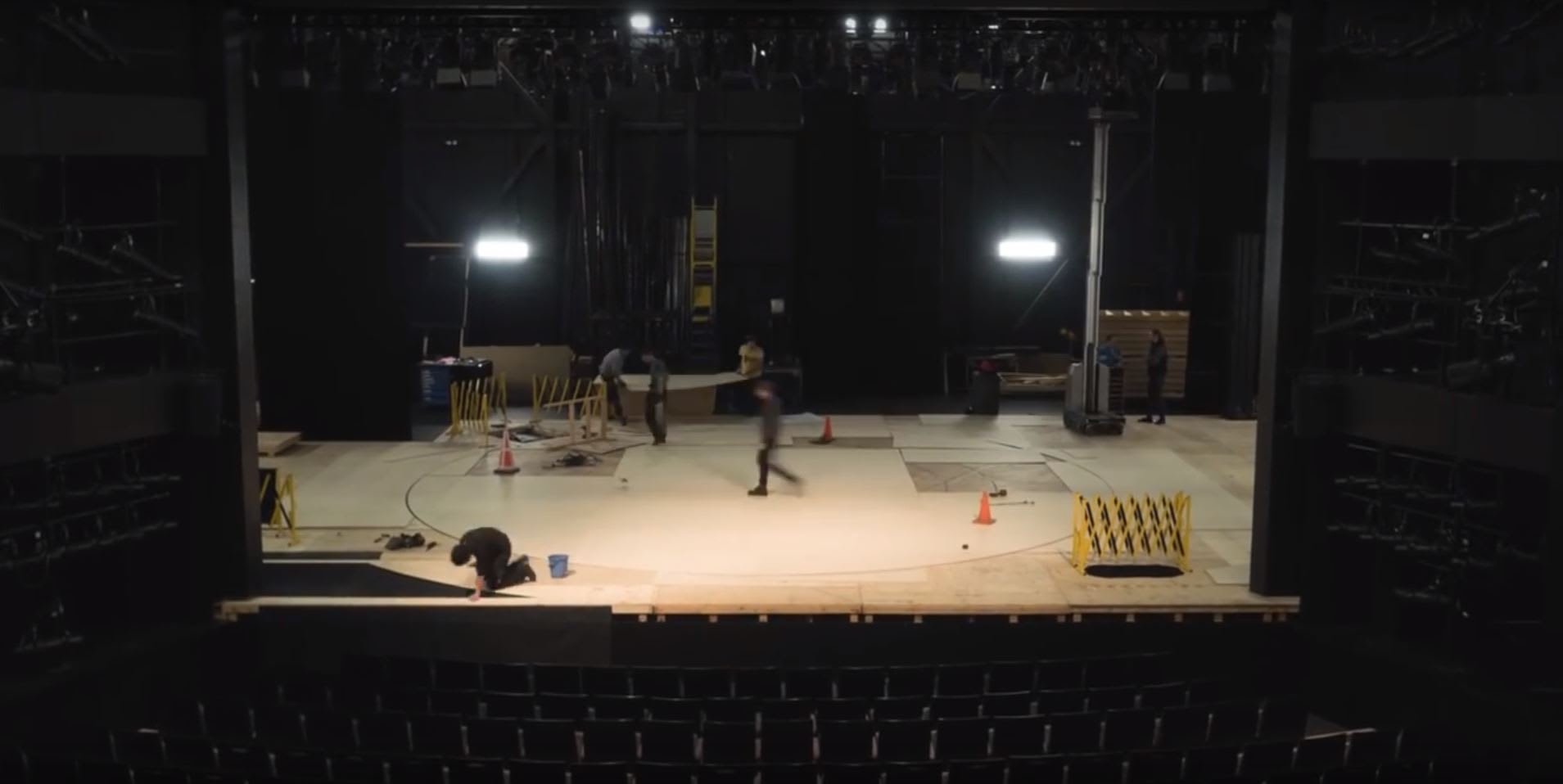 The Jasper Jones set is installed on the Sumner stage.
The Jasper Jones set is installed on the Sumner stage.
Day 2 | Finish installation and deliver wardrobe
There will inevitably be some installation work to continue on the second day of bump in, but work now begins on the finer details. The automation operator sets up any automation systems (e.g. revolve, snow machine, trapdoors, self-moving props or ‘rabbits’) that will be used in the production. The automation operator has usually been involved with the rehearsal process, and will have pre-programmed any moves prior to arriving at the theatre.
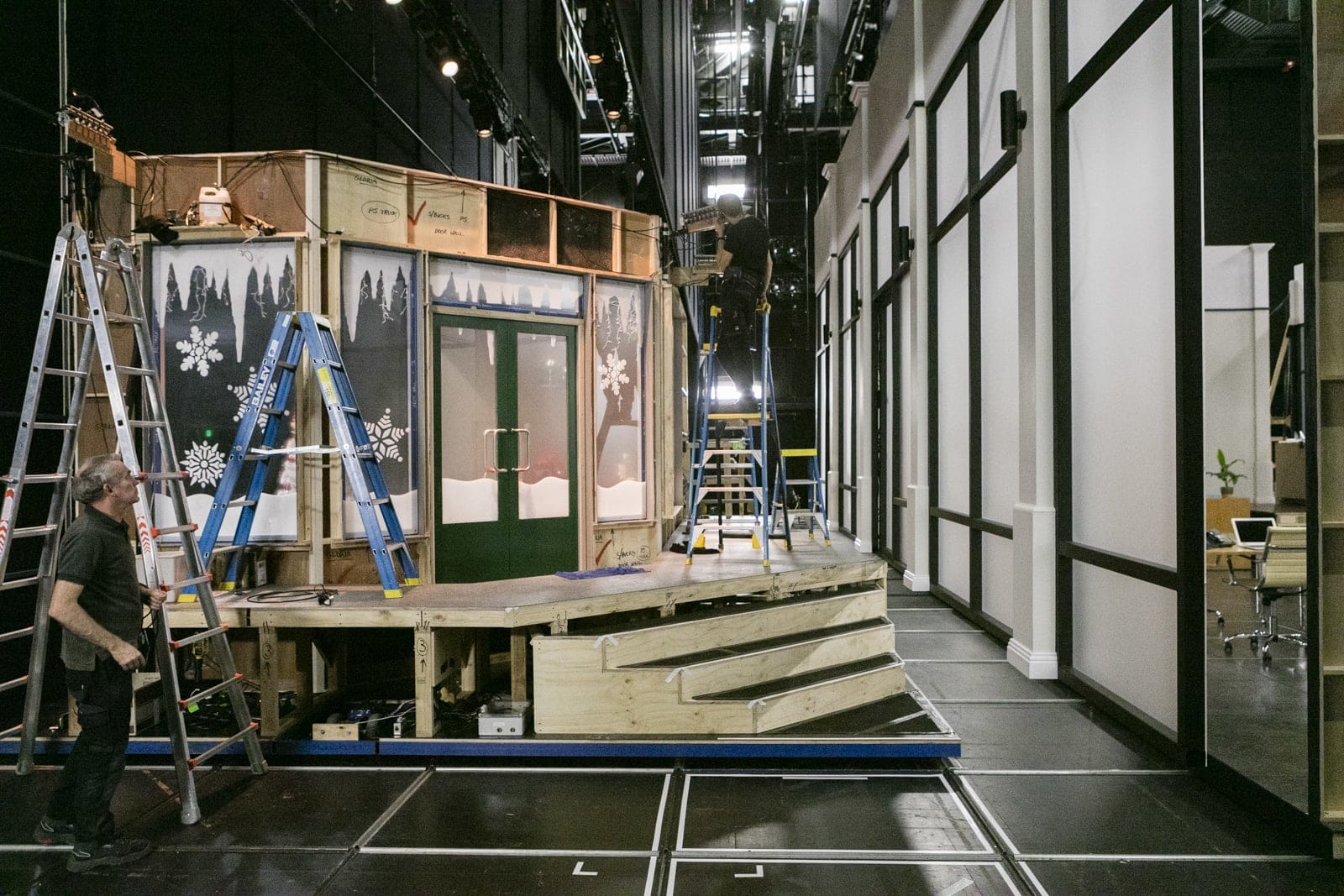 The Gloria set during bump in. PHOTO: Brett Boardman
The Gloria set during bump in. PHOTO: Brett Boardman
Day 3 | Focus lighting and commence plotting light and sound
This is when the technical elements start to come together. The lighting designer directs the lighting supervisor and the lighting team as to where each light is being coloured, pointed and shaped, to start creating the visual palette that allows the set designer and director to create the moods for the production. It is not unusual for a lighting designer to use up to 400 lighting fixtures in their design.
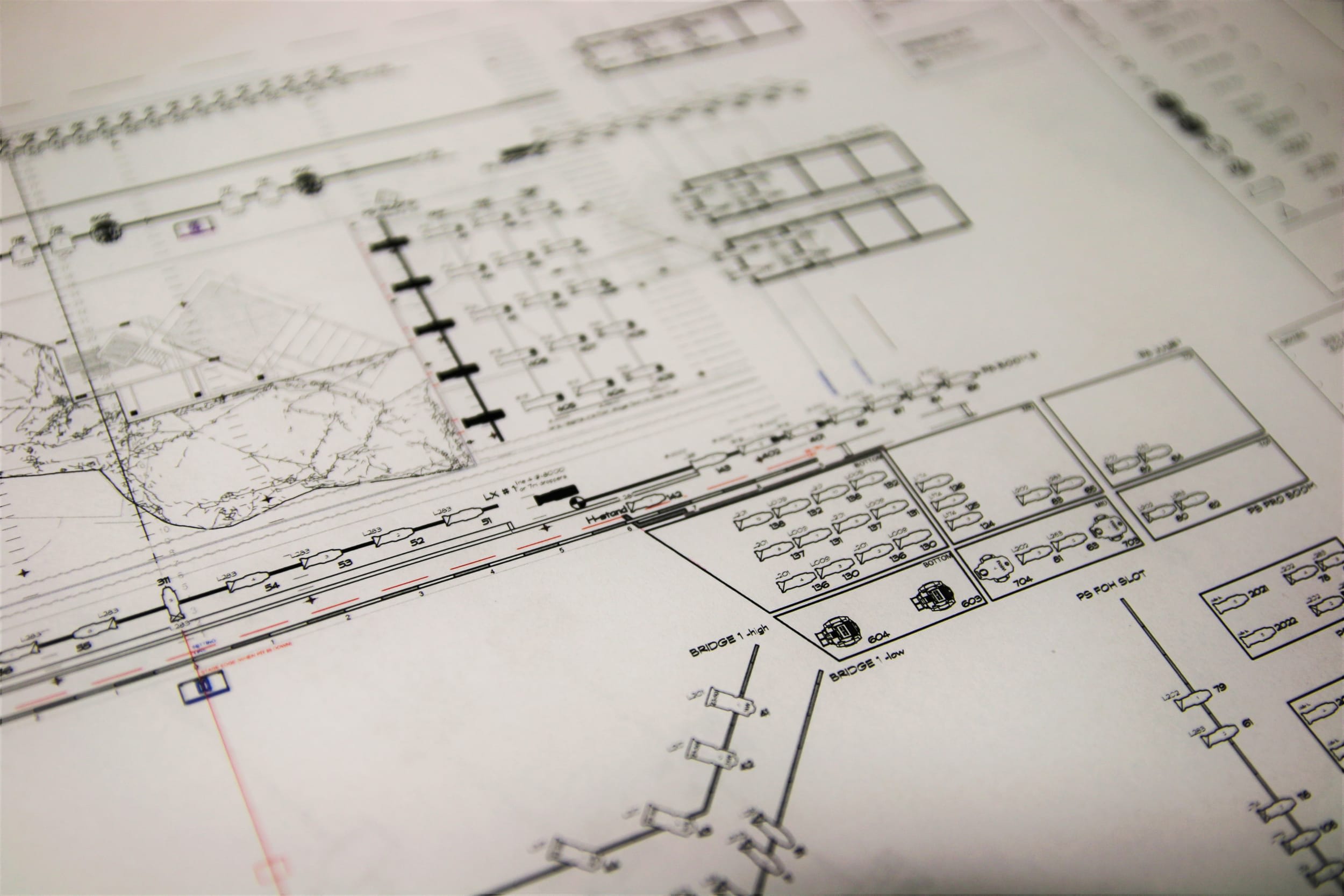 Detail of Matt Scott's lighting plan for Storm Boy.
Detail of Matt Scott's lighting plan for Storm Boy.Day 4 | Plot light and sound
The FOH (front-of-house) audio operator will mark up their script for cues, set-up and operate the audio console to allow smooth transition from the rehearsal to the stage during the technical rehearsals. Likewise, the lighting programmer sets up the lighting console, as they’ll operate the lighting from the control room during the season.
Day 5 | Technical rehearsals
The cast arrive at the theatre and begin technical rehearsals, integrating all the lighting, set and sound elements into their performance. The cast has likely been rehearsing with some technical elements at HQ (if a production uses a revolve, MTC always installs one in the rehearsal room so the cast can become accustomed to the movement), but it’s at this point that they’ll encounter lighting and flying elements for the first time.
The timing of scene changes might be a particular focus in technical rehearsals. While the cast have had four weeks to rehearse, the crew have to quickly learn their plots for the show. The FOH audio operator, for example, will be operating and mixing sound from their desk at the back of the auditorium.
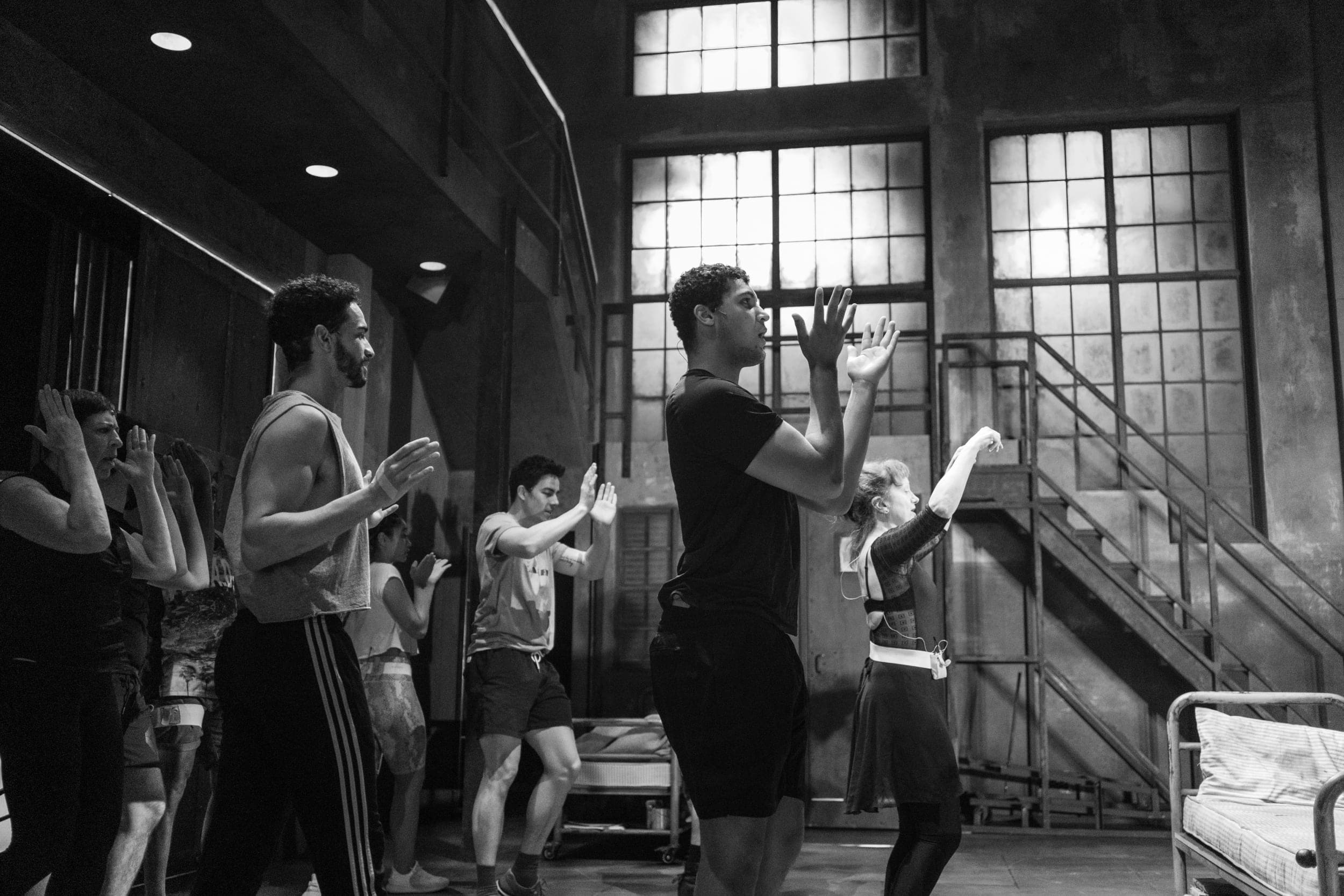 The cast of Kiss of the Spider Woman during technical rehearsals. PHOTO: Lachlan Woods.
The cast of Kiss of the Spider Woman during technical rehearsals. PHOTO: Lachlan Woods.
Day 6 | Dress rehearsal
It’s time for an audience! Dress rehearsals at MTC take place in front of a small audience so the cast can begin to harmonise their performance with the audience energy and response. During this stage, all the wardrobe elements – wigs, costumes, make-up – are incorporated. Backstage, dressers and wig/make-up staff will assist the cast with quick changes. Everybody in the crew has a plot, or sequence of actions, to follow during the performance, and these will be updated accordingly during the dress rehearsal.
Bump Out
At the conclusion of a production’s season, after performing eight times a week for several weeks, it’s time to bump out. Typically a two-day process, all the production elements are uninstalled in the reverse order of bump in. All the supervisors across lighting, sound and staging assist their crews to pack up their equipment, leaving the venue in a safe state so that the next production can begin bump in – sometimes the following day!
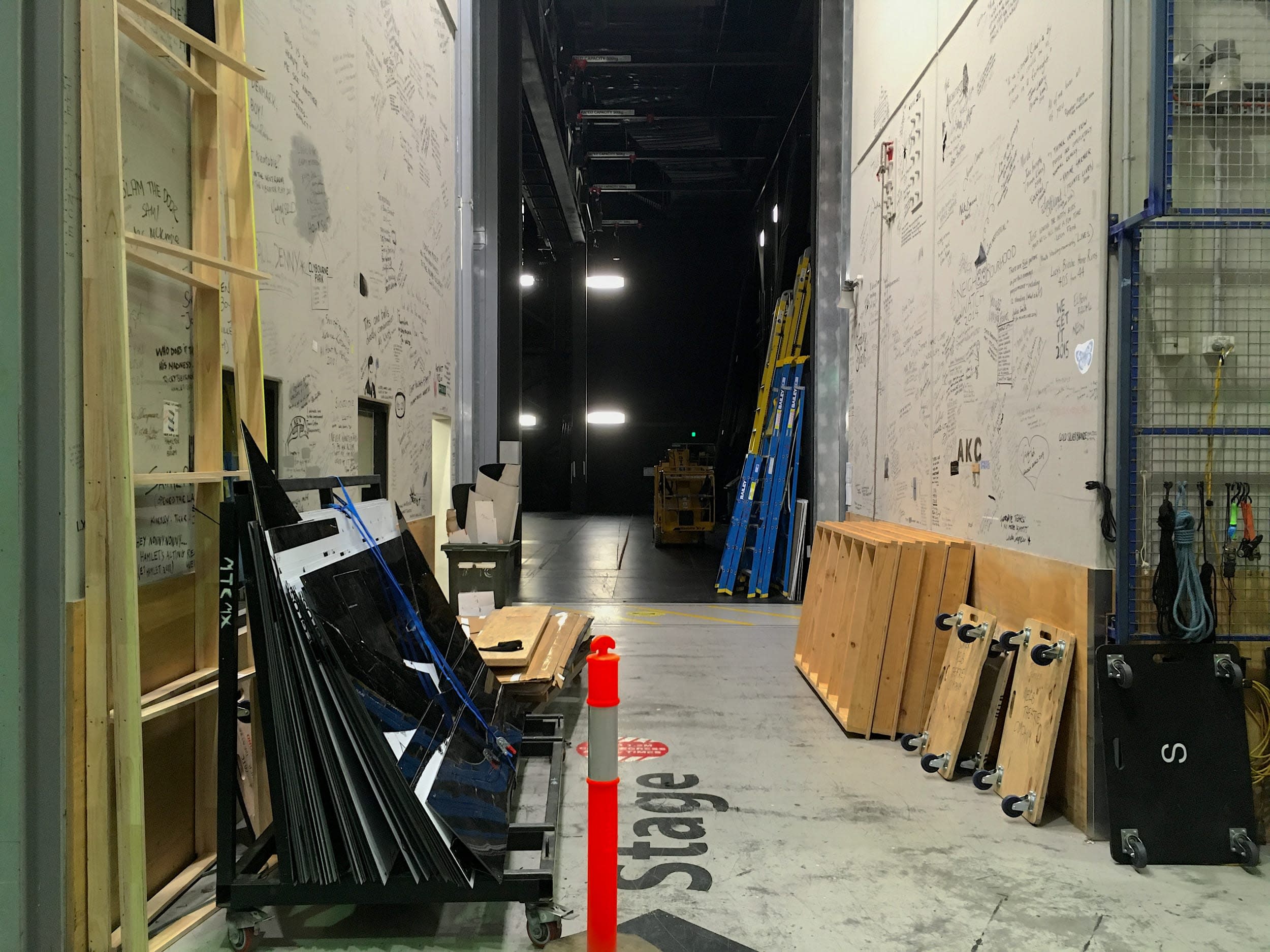 The scenery dock at Southbank Theatre. PHOTO: Nick Tranter
The scenery dock at Southbank Theatre. PHOTO: Nick Tranter
MTC keeps as many components of the show as possible in storage. Old scenic flats are frequently used in rehearsal, and our ever-expanding collection of props is a useful library of items to draw on for future productions. Likewise, costumes are kept in the costume store at MTC HQ, to be re-imagined, dyed, tailored and transformed in future productions. Buttons, badges, trim and accessories are frequently re-used.
Published on 9 June 2020


